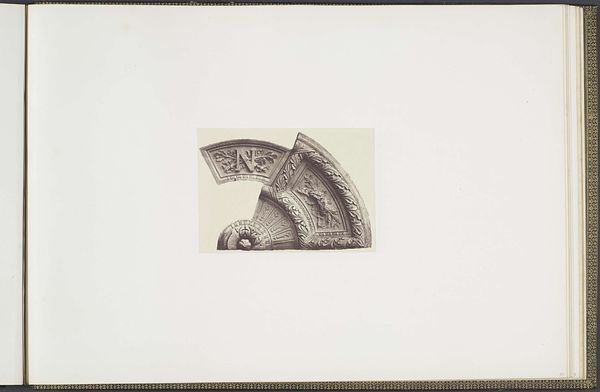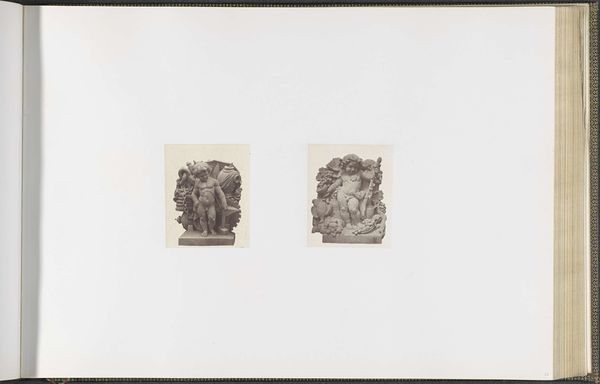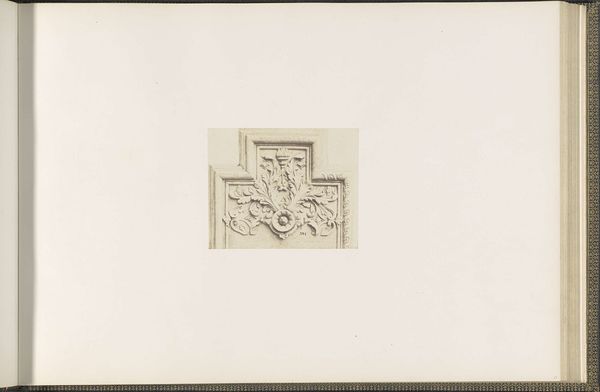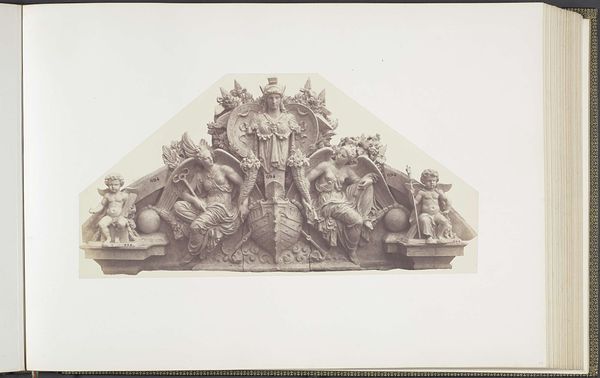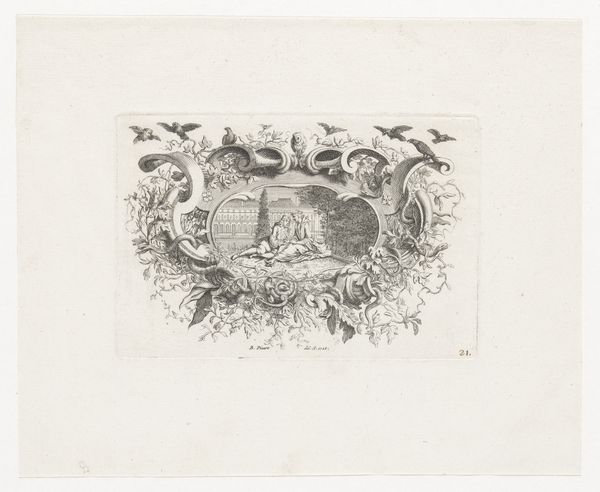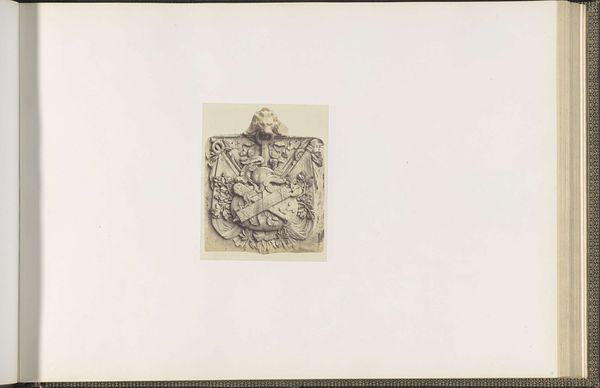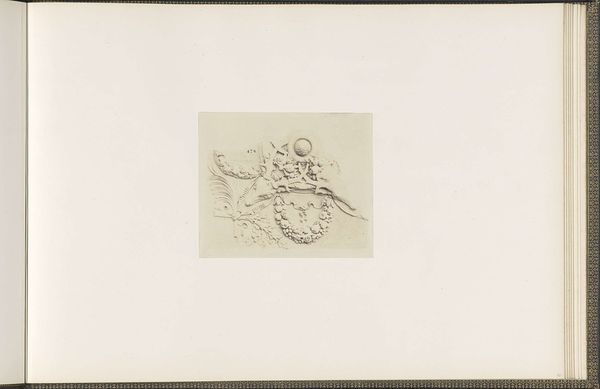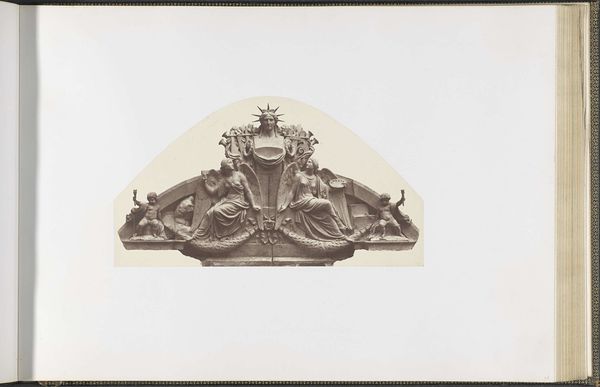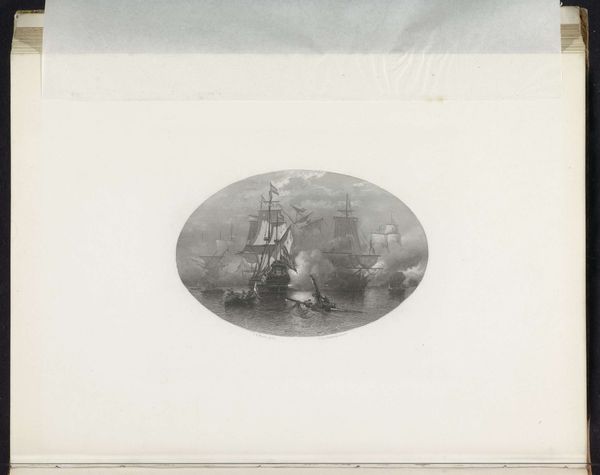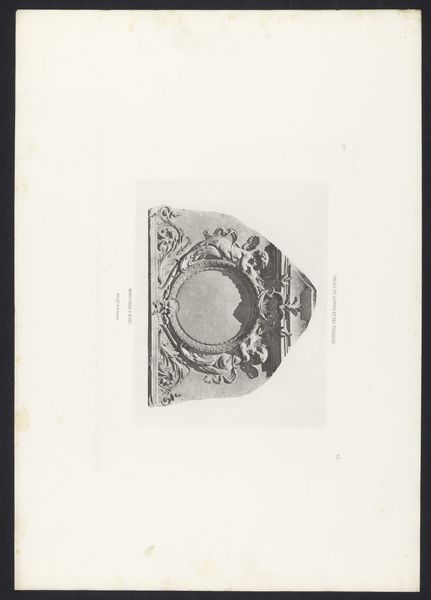
Gipsmodel voor decoratie op het Palais du Louvre door Jean-Marie-Bienaimé Bonnassieux c. 1855 - 1857
0:00
0:00
print, relief, photography, sculpture, albumen-print, architecture
#
neoclacissism
# print
#
relief
#
photography
#
geometric
#
sculpture
#
history-painting
#
albumen-print
#
architecture
Dimensions: height 382 mm, width 560 mm
Copyright: Rijks Museum: Open Domain
Editor: Here we have Edouard Baldus' albumen print from around 1855, a photograph of Jean-Marie-Bienaimé Bonnassieux’s plaster model for the Louvre’s decorations. It’s so fascinating how it captures sculpture as a photograph. How would you approach it? Curator: It's key to understand this print within the context of 19th-century architectural production. Baldus was often commissioned to document these processes. He's not just making art; he’s participating in a larger industrial undertaking. Editor: So, you see it more as a record than a purely aesthetic creation? Curator: Precisely! Consider the labor involved. Bonnassieux creates the model, Baldus documents it, and countless others will eventually produce and install the actual architectural elements. This image encapsulates a division of labor characteristic of its time. The means of production and the creation are both visible and crucial to its existence. Editor: That’s a very interesting point of view. It feels so far from the solitary idea of the sculptor creating on their own! Does the material – the plaster, the photographic chemicals – contribute to your interpretation? Curator: Absolutely. Plaster, a relatively inexpensive material, serves as a stand-in for the final stone, reflecting the aspirations and economics involved. Photography, then a cutting-edge technology, is deployed to record and disseminate these designs, streamlining the building process. So the reproduction changes our entire sense of production itself. Editor: I see…It reframes the work! What's most striking to me now is how this one image captures the combined effects of artistry, industrialization, and economics on Parisian architecture. Thank you! Curator: My pleasure. Viewing art through the lens of material production really opens up these layers of meaning and labor, doesn’t it?
Comments
No comments
Be the first to comment and join the conversation on the ultimate creative platform.


